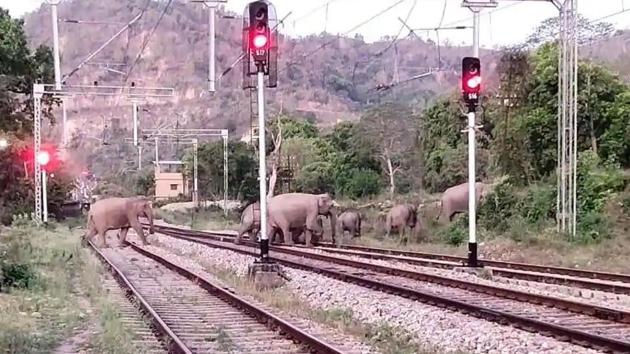West Bengal proposes to set up rail fences to rein in elephants
The issue was discussed in a workshop held on September 22 for the preparation of the national elephant action plan.
Old railway tracks may now be used to restrict or divert movement of elephants in south Bengal. The West Bengal government is planning to set up fences with these old tracks along with a range of other barriers, including trenches and electric fences, to restrict the movement of these jumbos in the reserve that have been created for them.

“As a short term measure, we are planning to put up some barriers like fences made out of old railway tracks, electric fences and digging trenches to restrict the movements in south Bengal. The plans haven’t been finalised though. Discussions are being held. We are also going to dig trenches in some areas along the Bengal-Jharkhand border,” said Rajib Banerjee, forest minister of West Bengal.
The issue was discussed in a workshop held on September 22 for the preparation of the national elephant action plan. Top forest officials of various states of the east central elephant division, which comprises south Bengal, Odisha, Chhattisgarh, Jharkhand, Bihar, north Andhra Pradesh and Madhya Pradesh attended the meeting along with experts.
“One of the issues raised by West Bengal was how to check the scale of man-animal conflict in south Bengal. For that it is necessary to ensure that the elephants stay within the elephant reserve and do not stray outside in search of food and water. If necessary, some need to be translocated,” said Raman Sukumar, noted elephant expert who attended the meeting.
Data laid down in the Lok Sabha on Wednesday revealed that at least 433 people have been killed across West Bengal between April 2014 and September 2019. In Odisha, Jharkhand and Chhattishgarh, the death toll was 447, 391 and 329, respectively, during this period.
The idea of putting up barriers to restrict or divert movement of elephant herd is, however, not new to West Bengal. Local community has also been involved in the past to put up and maintain fences in the villages.
“The concept of rail fencing may be new to West Bengal but it has been tried out in the recent past in Karnataka. It has been found to be successful as claimed,” said Mukti Roy ,another elephant expert present in the meeting.
A recent booklet published by the union environment ministry suggests that rail fencing though expensive is eco-friendly and more effective than solar electric fences and elephant proof trenches which are partially successful. Railway fencing however was criticised after an elephant got stuck in the fence and died in 2018 near the Nagarhole National Park in Karnataka.
“But apart from these short term measures we also need to go for habitat improvement in the Mayurjharna elephant reserve without which the elephants can’t stay there. For these long term planning and inter-state coordination is necessary,” said Roy.
While south Bengal has around 200-220 elephants, the Mayurjharna reserve is around 414 sq km. Experts, however, said the reserve has to have an area of 1000 sq km which could help it sustain a sizeable population of elephants. North Bengal has around 500 elephants.
“While workshops for three elephant divisions including south India, north-east and east-central have already been held, the workshop for the north-west division is likely to be held on September 30. Based on the deliberations of these workshops the draft for the national elephant action plan would be prepared,” said Prajna Panda, National coordinator of the elephant cell of union environment ministry.






